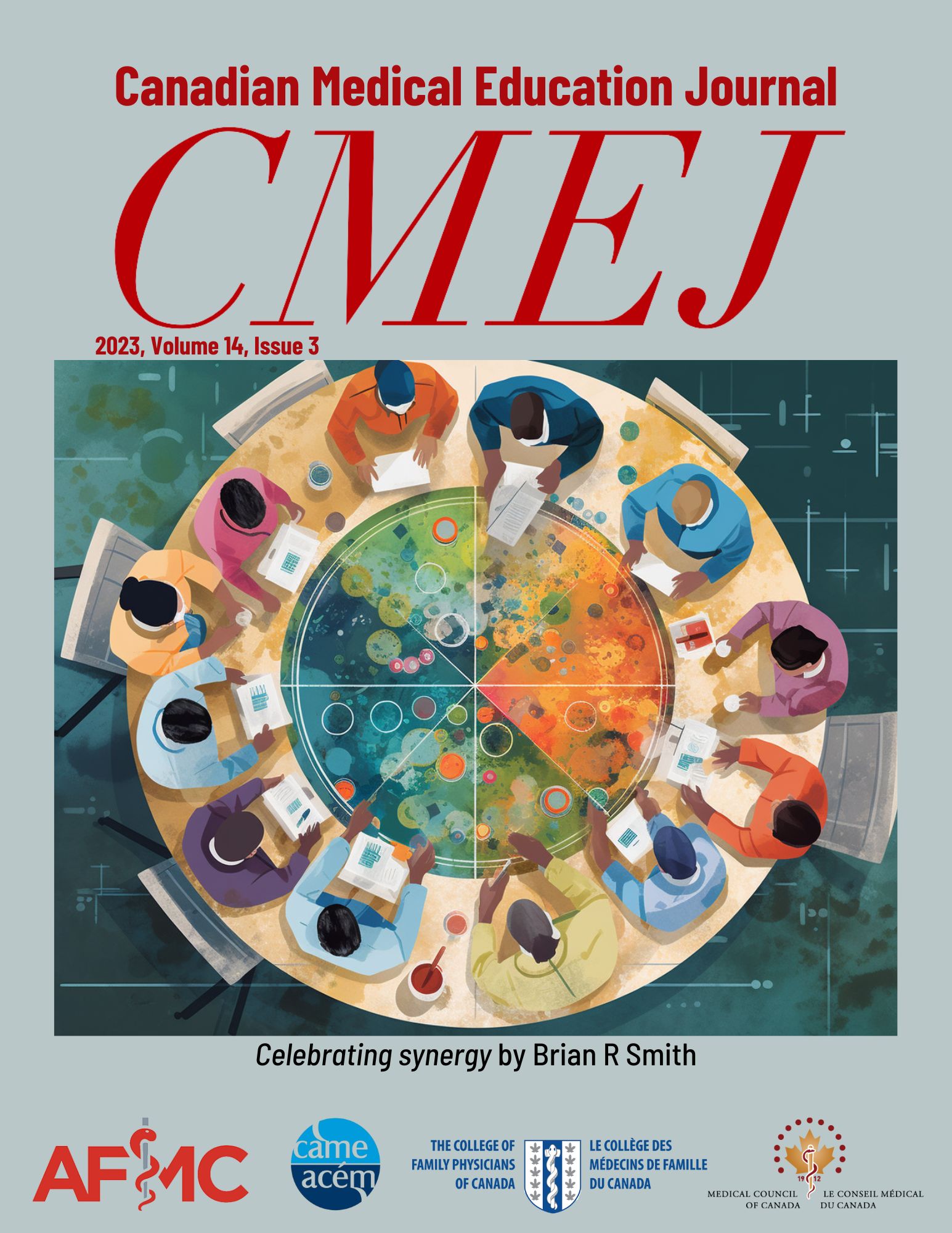Six ways to maximize survey response rates: lessons from a medical school accreditation survey in a Canadian setting
DOI:
https://doi.org/10.36834/cmej.75380Abstract
Background: Surveys are being increasingly used to gather feedback and study data in healthcare professions. However, it may be challenging to achieve high response rates in surveys administered to healthcare professionals. The aim of this paper is to report six strategies that contributed to a high response rate on the Independent Student Analysis at the University of Toronto (U of T), which can be applied to other surveys to achieve strong response rates amongst healthcare professionals.
Methods: In 2019, as part of accreditation for the U of T MD Program, we conducted the Independent Student Analysis, a student-led survey examining a medical student’s experience. We review and critically evaluate the factors that contributed to a robust response rate amongst one of the largest cohorts of medical students in Canada.
Results: Among 1080 students in the MD program, we achieved an unprecedented response rate of 87.2%. Six factors were identified that most contributed to our high response rate, including: faculty support, student representation, eliciting participant feedback, creating protected time for completion, offering incentives, and generating awareness.
Conclusions: Eliciting high survey response rates from medical learners can be challenging. However, with careful consideration of learner feedback and effective employment of the strategies discussed in this paper, medical school faculty may better engage students in survey completion, achieving higher response rates and gathering richer insight, which can be used to more effectively enact meaningful change amongst healthcare professionals.
Downloads
References
Van Mol C. Improving web survey efficiency: the impact of an extra reminder and reminder content on web survey response. Int J Soc Res. 2017; 20: 317-327. https://doi.org/10.1080/13645579.2016.1185255. DOI: https://doi.org/10.1080/13645579.2016.1185255
Grava-Gubins I and Scott S. Effects of various methodologic strategies: survey response rates among Canadian physicians and physicians-in-training. Can Fam Physician 2008; 54: 1424-1430.
Johnson TP and Wislar JS. Response rates and nonresponse errors in surveys. JAMA 2012; 307: 1805-1806. https://doi.org/10.1001/jama.2012.3532. DOI: https://doi.org/10.1001/jama.2012.3532
Meterko M, Restuccia JD, Stolzmann K, et al. Response rates, nonresponse bias, and data quality: results from a national survey of senior healthcare leaders. Public Opinion Quarterly 2015; 79: 130-144. https://doi.org/10.1093/poq/nfu052. DOI: https://doi.org/10.1093/poq/nfu052
Fan W and Yan Z. Factors affecting response rates of the web survey: A systematic review. Comput Hum Behav 2010; 26: 132-139. https://doi.org/https://doi.org/10.1016/j.chb.2009.10.015. DOI: https://doi.org/10.1016/j.chb.2009.10.015
Nair CS, Adams P and Mertova P. Student engagement: the key to improving survey response rates. Qual High Educ. 2008; 14: 225-232. https://doi.org/10.1080/13538320802507505. DOI: https://doi.org/10.1080/13538320802507505
Rolstad S, Adler J and Rydén A. Response burden and questionnaire length: is shorter better? A review and meta-analysis. Value Health 2011; 14: 1101-1108. 20110802. https://doi.org/10.1016/j.jval.2011.06.003. DOI: https://doi.org/10.1016/j.jval.2011.06.003
Edwards PJ, Roberts I, Clarke MJ, et al. Methods to increase response to postal and electronic questionnaires. Cochrane Database Syst Rev 2009: Mr000008. 20090708. https://doi.org/10.1002/14651858.mr000008.pub4. DOI: https://doi.org/10.1002/14651858.MR000008.pub4
Jia P, Furuya-Kanamori L, Qin ZS, et al. Association between response rates and monetary incentives in sample study: a systematic review and meta-analysis. Postgrad Med J 2021; 97: 501-510. 20200826. https://doi.org/10.1136/postgradmedj-2020-137868. DOI: https://doi.org/10.1136/postgradmedj-2020-137868
Javidan AP, Raveendran L, Rai Y, et al. Fostering trust, collaboration, and a culture of continuous quality improvement: a call for transparency in medical school accreditation. Can Med Educ J 2020; 11: e102-e108. 20200923. https://doi.org/10.36834/cmej.70061. DOI: https://doi.org/10.36834/cmej.70061
Downloads
Published
How to Cite
Issue
Section
License
Copyright (c) 2023 Arshia Pedram Javidan, Yeshith Rai, Jeffrey Cheung, Raumil V Patel, Kulamakan Mahan Kulasegaram

This work is licensed under a Creative Commons Attribution-NonCommercial-NoDerivatives 4.0 International License.
Submission of an original manuscript to the Canadian Medical Education Journal will be taken to mean that it represents original work not previously published, that it is not being considered elsewhere for publication. If accepted for publication, it will be published online and it will not be published elsewhere in the same form, for commercial purposes, in any language, without the consent of the publisher.
Authors who publish in the Canadian Medical Education Journal agree to release their articles under the Creative Commons Attribution-Noncommercial-No Derivative Works 4.0 Canada Licence. This licence allows anyone to copy and distribute the article for non-commercial purposes provided that appropriate attribution is given. For details of the rights an author grants users of their work, please see the licence summary and the full licence.











